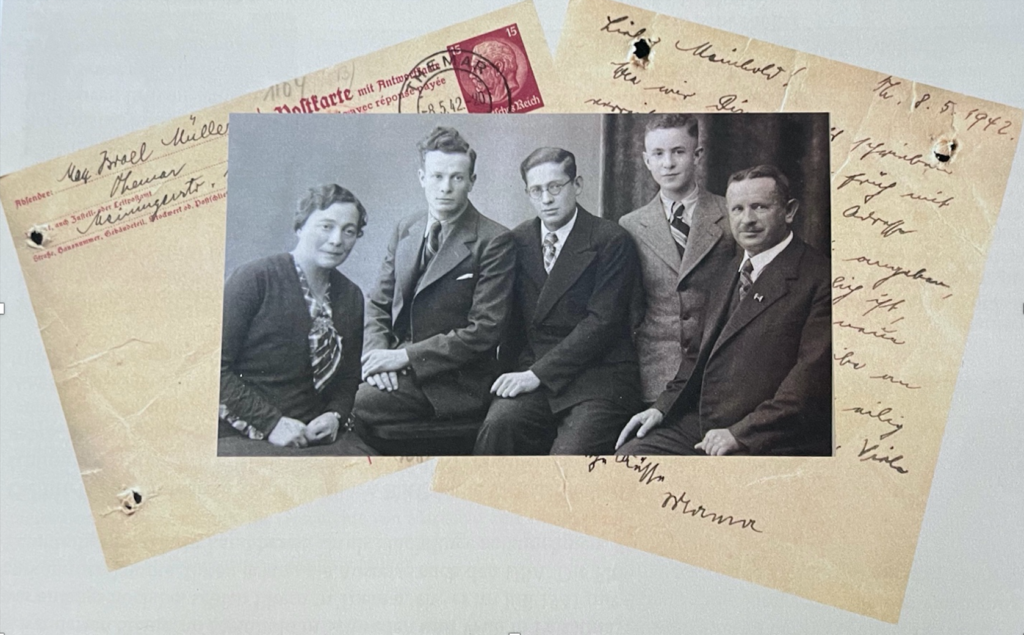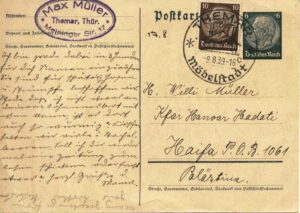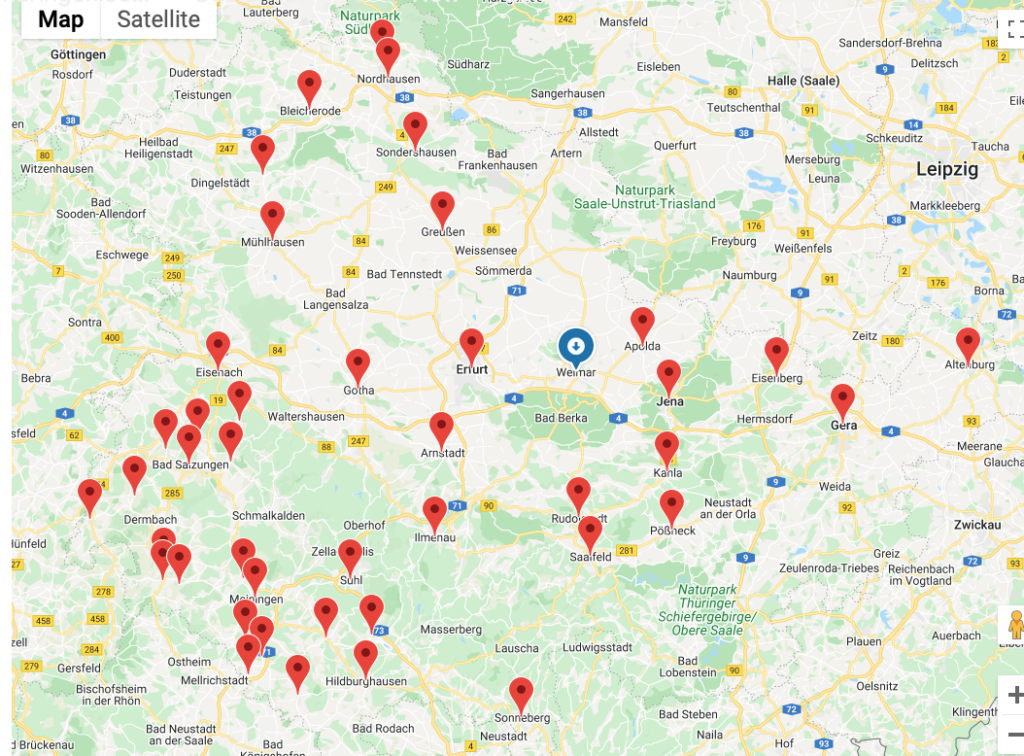
 ,,..verreisen wir morgen früh.
,,..verreisen wir morgen früh.
We leave early tomorrow morning.”
This website begins with the words of Max II and Clara Müller, in a card they sent to their son, Meinhold, on 8 May 1942.

On 9 May 1942, they left Themar, their home since 1929, and travelled to Weimar. There they joined 508 other Jewish men, women, and children from 42 other places in Thüringen and travelled to Belzyce Ghetto in the Lublin District of occupied Poland. The list above is the one checked off by Nazi officials when the five people — one a 5-year old child, Inge Neuhaus — from Themar climbed into the train in Weimar. The stamp “Abgewandert” or “emigrated” was the Nazi codeword for “deported.”
Clara and Max had three sons: Herbert (left in photo above), b. 1913; Meinhold (middle), b. 1919, and Willi (right), b. 1922. Max and Clara quickly recognized the threat posed by the Nazis were able to arrange for their sons to leave Germany: Meinhold left in 1936, Willi in 1938, and Herbert in 1941 in an 11th hour escape. All three sons were therefore outside of Germany and occupied Europe when the deportations began in October 1941.
 From the morning after the Kristallnachtpogrom of 9/10 November 1938, Clara and Max wrote regularly to Meinhold in Sweden and Willi in Palestine. Willi kept the correspondence and, in 2011, his son Reuven made them available to all those who might be interested in the story they tell. They are among the most-visited pages in the website dedicated to the Jewish families of Themar.
From the morning after the Kristallnachtpogrom of 9/10 November 1938, Clara and Max wrote regularly to Meinhold in Sweden and Willi in Palestine. Willi kept the correspondence and, in 2011, his son Reuven made them available to all those who might be interested in the story they tell. They are among the most-visited pages in the website dedicated to the Jewish families of Themar.
The letters and cards relate the desperate search Max and Clara made to find refuge elsewhere in the world. (The story can be found here.) They also tell the tale of the last years and days in the life of a Jewish community in a small town in the state of Thüringen.
They thus speak to the experience of families in the other 42 communities whose members were deported on the 10th of May, 1942 to Ghetto Belzyce. This website presents the stories of one individual from each of the 43 villages, towns, and cities who was deported on 10 May 1942 from Weimar to Belzyce Ghetto. Wherever possible, the person is set within the family context: in several cases, it was impossible to find any additional information; in others, archival documents, both public and private, revealed the rich tapestry of lives lived and lost.

This website is a ‘work-in-progress’ and we welcome any questions or comments.
As well, see article by Sebastian Haak, “Digital Memorial for Deported Thüringen,” published on May 2022.